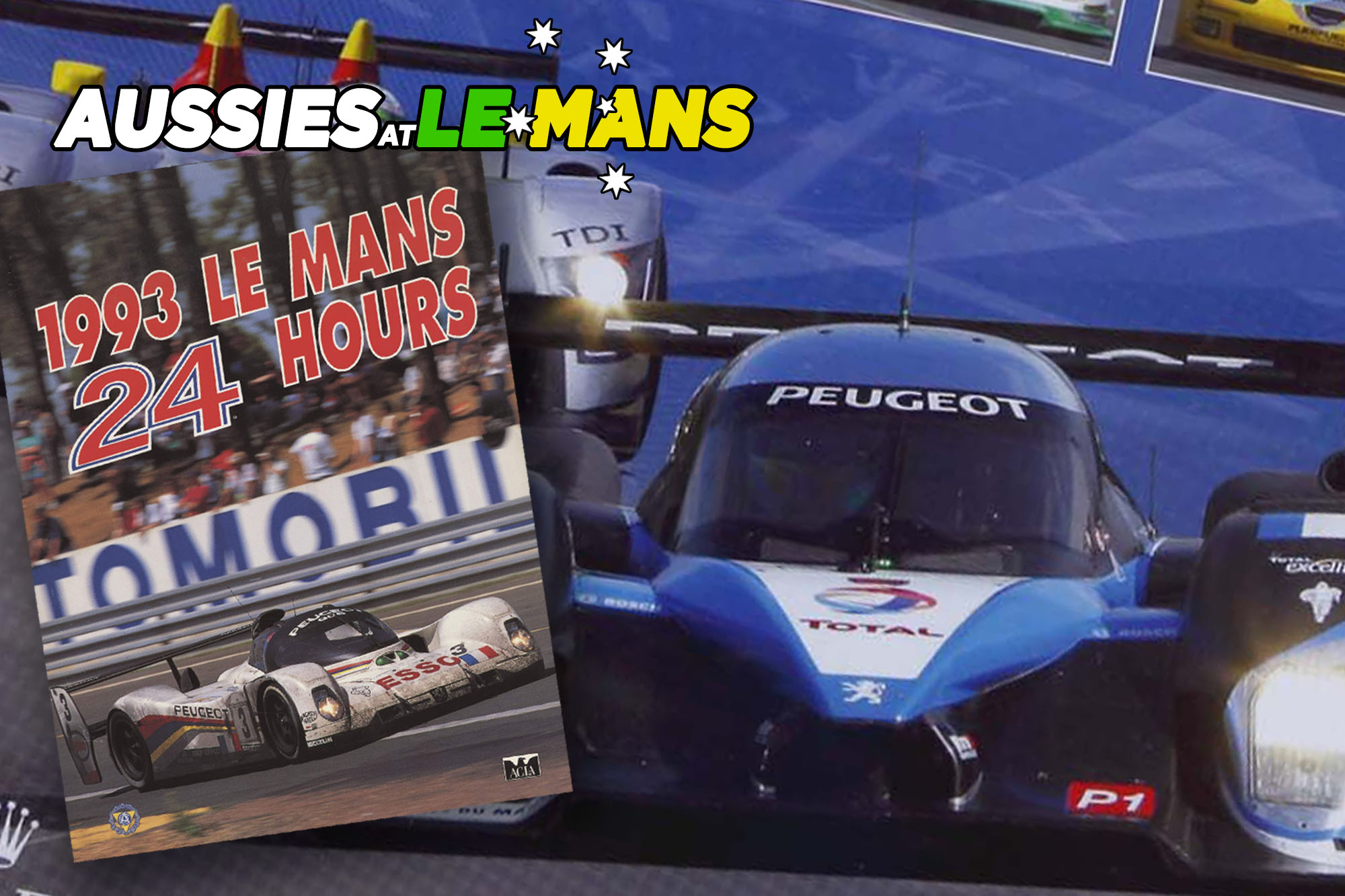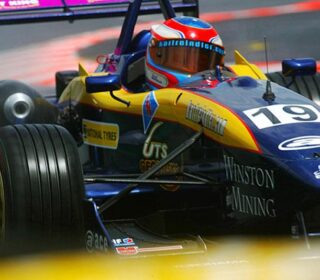AUSSIES AT LE MANS: PART 3 – Brabhams

BRABHAM. When it comes to Australian motorsport internationally, it’s the surname, one now three generations deep.
Read Part 1 of ‘Aussies at Le Mans’ here.
Read Part 2 of ‘Aussies at Le Mans’ here.
While Sir Jack’s dalliance with Le Mans might have only lasted two years, the race became deeply connected with two of his three sons, though all three of them – Geoff, Gary and David – attempted the race at least once.
Gary, made his lone start at La Sarthe driving with Vern Schuppan in his final tour in 1989, finishing 13th outright and 10th in class.
However, Jack’s oldest son, Geoff, had a much more successful run at it.
Though Le Mans was far from the focus of his remarkable international career, it did deliver one of his most successful moments when he became just the third Australian to win the race when he succeeded for Peugeot in 1993.
Geoff had already firmly made his mark as a successful driver before tacking Le Mans, however. He won the Australian Formula 2 Championship in 1975 and immediately left for England, racing in an array of Formula 3 series in the mid to late 1970s.
America beckoned from that, and it was in the revised Can-Am series where the eldest Brabham son made his mark: finishing 3rd on his first full season in a Lola-Chevrolet for Racing Team VDS, before winning the series in 1981 in just his second full season.
That led to opportunity in the CART IndyCar Championship, where he drove for teams like Bognotti, Galles Racing and Krako Racing throughout a six-year stint in America’s top open wheel category.
He was fifth and rookie of the year in the 1981 Indianapolis 500 for Kraco and fourth two years later for VDS. Brabham would make 10 Indy starts from 12 attempts and until Will Power won the race in 2018, Brabham and Vern Schuppan could argue as to whom was Australia’s most successful driver on the Brickyard.
Geoff Brabham’s Le Mans debut came in 1989 in a factory Nissan RC89, driving with Chip Robinson and Arie Lyendyk, though they failed to finish. It was a similar story in the R90C a year later, Derek Daly replacing Lyendyk as the third driver.
After two years away from La Sarthe, Brabham returned in 1993 as a factory Peugeot driver.
With Chrstophe Bouchut and Eric Helary alongside him, the Stunning, V10-powered 905 Evo won by a lap, delivering the Jean Todt-led team a remarkable victory on home soil, also defending their 1992 victory.
The French brand’s next win would have to wait, but would again have the Brabham surname written all over it.
Keep scrolling.. there’s more to this story below.
LISTEN to our ‘Aussies at Le Mans’ Podcast feature on Spotify, Apple Podcasts, Radiolemans.com or via the player below!

Also standing on the podium in 1993 was Geoff Brabham’s baby brother, David.
In his second Le Mans 24 Hour, the youngest Brabham had been drafted into the factory-backed TWR Jaguar team to drive a racing version of their road-going XJ220 Supercar in the brand-new GT class, which made its debut in the 1993 race.
David had made his Le Mans debut a year earlier for the factory Toyota team, though had failed to finish.
His Le Mans opportunity had come following a rapid climb through the ranks of junior open wheel racing, including a win in the British Formula 3 Championship and the Macau Grand Prix in 1989. Unfortunately, his Formula 1 debut with the family firm was far from successful, as would later attempts with Simtek in 1994.
It was clear that Sports Car racing was what David Brabham was good at. And boy.. wasn’t he good at it.
With Sir Jack on hand to watch, David and co-drivers John Nielson and a pre-F1 David Coulthard won the GT class for Jaguar on the same day Geoff delivered Peugeot what would be their final outright win for the better part of two decades. It was a remarkable day for the Brabham family.
It wasn’t to last. After a lengthy battle with race officials, the car was excluded from the results a full month after the race was finished. It would set the scene for several years of frustration for the youngest Brabham in one of the world’s oldest races.
He was, however, consistent. Fourth in a Gulf Racing McLaren in 1996. Seventh in 1998 and 1999 in the unique, front-engined Panoz Esperante, the US team to be Brabham’s home for more than half a decade.
In 2003 he switched to Bentley, joining Mark Blundell and Johnny Herbert in one of a pair of Bentley Speed 8s entered in the GTP class. The cars were dominant: delivering the new-look Bentley boys the brand’s first Le Mans win since 1930 in a 1-2 punch for team GB. For Brabham, though, it was second, two laps behind the winning car driven by Rinaldo Capello, Guy Smith and Mr Le Mans, Tom Kristensen.
A return to his GT roots, however, finally delivered that long-awaited Le Mans win for David in the latter half of the 2000s. Driving for Aston Martin Racing, he was third in GT1 in 2005 and finally got to keep a winners trophy when he, Darren Turner and Rickard Rydell won in 2007. He did it again a year later – but that outright win was still on his mind.
Much like his older brother, it was Peugeot who delivered it.
Though racing for Highcroft Racing in the American Le Mans Series, Brabham was deputised to the French squad for Le Mans duties as Peugeot returned for a third attempt at winning the race with the unique, diesel powered 908.
Breaking the stranglehold of Audi, the Pugs finished first, second and sixth, David Brabham teaming with Marc Gene and Alexander Wurz to win by a lap.
It was the brand’s first win since Geoff Brabham had helped the former iteration of their works team claim success in 1993.
In the commentary box, another Aussie had a role to play – Leigh Diffey calling the race for American Broadcaster Speed TV.
David Brabham would return to Le Mans twice more as a driver, finishing 9th for Highcroft in 2010 and 6th in 2012 for JRM, both times in a HPD-built prototype.
David Brabham started the 24 Hours of Le Mans 18 times, a record for an Australian driver. He won it outright once, won his class on three occasions – consecutively – and scored another two podium finishes.
Coupled with his four wins at Sebring, his 2009 and 2010 American Le Mans Series titles and everything else in his remarkable career, he departed La Sarthe as Australia’s most decorated Sports Car racer.














